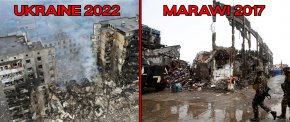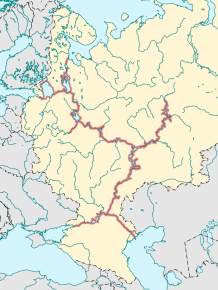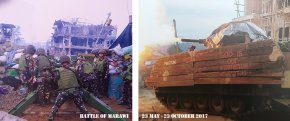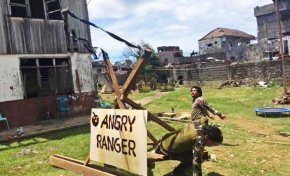Post 1 of 3: RCP as a concept and resources on CQB tactics
Concerning Kharkiv I propably have overestimated the Russians plus the invasion likely was not that surprising while I may have underestimated the size of the city and the hardships of urban combat.
1. Do you know the concept of relative combat power (
RCP)? Read back this thread.
2. 5:1 RCP needed in urban areas, if your troops are tactically competent, with an adequate battle plan.
3. Even for the superbly equipped and tactically competent, an urban battle is a long hard slog. Take for example, the Second Battle of Fallujah. That took the Americans 1 month, 2 weeks and 2 days to fight.
4. What Russia does in Ukraine is not terrorism but rather, they are war crimes. A better example of the long hard slog of an urban war faced by the Russian Army in Mariupol would be the Battle of Marawi. In every city the Russian Army fights in, they will lack clear information regarding the location and estimated number of Ukrainian Army troops defending a particular sector of the city.

5. Likewise, the Philippines were surprised by the scale of the fighting in the city of Marawi and the Armed Forces of the Philippines (AFP) took months to clear the city, totally destroying it.
(a) This all started with Operation Bingo in May 2017 — to arrest ISIS-Philippines leadership (namely, Isnilon Hapilon), with an AFP contingency plan to extricate the raiding element, as described by Maj. Adolf Ian M. Garceron of the AFP in his Master’s Thesis (link provided in paragraph (e) below) and by James Lewis in “
Small Team Lessons Learned for the Close Fight”.
(b) When Alpha Company of 65th Infantry Battalion, who were sent to reinforce the raiding elements from the AFP-Joint Special Operation Group (AFP-JSOG), all hell broke lose. The terrorists and the armed civilians in the area were known for their swarm tactics, but the large number of deployed forces for Operation Bingo could be what discouraged the terrorists from going further in employing their swarm tactics, and discouraged armed civilians from joining the swarm against those involved in the raid.
(c) The security of the plan, the plan for the breaching, and raid of the house for the arrest of ISIS-Philippines leadership worked during the execution, but the AFP-JSOG planners fell short in contingency planning; but they were adaptive, issuing Frag. Orders when things did not go as expected during the different phases of fighting. The AFP used quadcopter drones to observe the mortar fire in targeting terrorist strongholds. Also, they continued monitoring radios captured from terrorists; and later learned that a terrorist commander and his two subordinates were neutralized in that particular mortar fire mission.
(d) Elements of AFP-JSOG we’re tasked to conduct crash courses in Close Quarter Battle (CQB) for newly arrived AFP units in order to improve their capability in urban combat before they were sent into fight at Marawi City. The AFP planning and assessment phase involved leader’s reconnaissance and drone reconnaissance. The result of the reconnaissance was the basis of the plan for the assault of various target buildings that took place later. The next phase was softening or saturation fire towards the target building. Softening sometimes involved aerial bombing, artillery, mortar, and machine-gun fire.
(e) To clear terrorist occupied buildings, the AFP used 81 mm mortars, crew-served weapons, armored vehicles and even man-handled a 105 mm howitzer in a direct fire mode to soften their targets prior to CQB. The howitzer fired rounds towards the Landbank Building in order to create several openings in the walls to serve as entrances for the assaulters. The Battle of Marawi brought an excellent case worth studying for urban warfare that is applicable to what will happen to cities in Ukraine. There is plenty of declassified
professional commentary to read to help us understand the thinking behind this CQB.
(f) To give you an idea of how difficult things were for the APF, the terrorists were shooting through loop holes, to avoid detection. The terrorists also booby-trapped buildings with IEDs before they would abandon buildings assaulted by the AFP. Operation Bingo unexpectedly triggered a 5 month long urban war (with the eventual deployment of Australian and American advisors to the AFP), against an enemy force far larger than expected.










